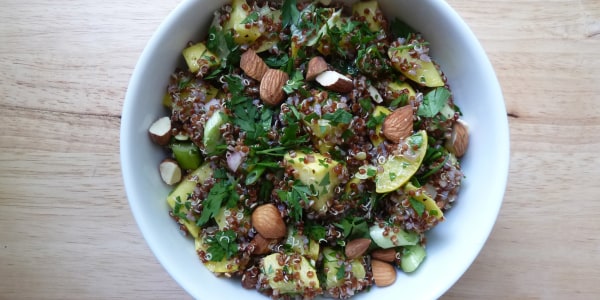The world of nutrition has evolved in the past decade. Nutrition and wellness experts from have come out of the woodwork. Information on diets (for better or for worse) has become as multifaceted and confusing as an organic chemistry textbook. This surplus of information on how to eat has not necessarily made us any healthier or less overweight.
“Clean eating” is a great example of a concept that enthusiastically evolved out of our quest to eat “right.” Diet books, websites, TV shows and magazines devote their content to it. Celebrities tout it everywhere they go. Even food companies have jumped on the bandwagon, boasting clean ingredients in their products.
What does it all mean though? There is no exact definition of clean eating, but the concepts that align with it include the following principles:
- a whole foods diet
- minimal to no processing of ingredients
- as close to the farm and earth as possible (eating local, high consumption of plants, grass-fed proteins, etc.)
- no pesticides, hormones or antibiotics
Here’s where things can get fuzzy. Clean eating does not mean you won’t eat foods that could lead to chronic illness or weight gain. After all, maple sugar may be considered clean due to the fact it comes directly from a tree, as opposed to a laboratory. A 12-ounce steak may also be clean if the cow it came from led a happy, grass-stuffed life prior to slaughter.
However, too much of these “clean” foods in place of fruits, vegetables and other clean options may have a very negative impact on your health. Here’s how to achieve a healthy, clean diet without sacrificing your sanity.
1. Establish a 90 percent rule.
Sometimes in the quest to eat right, we forget about taste, satisfaction and all the things we loved about food when we were kids. You can probably remember eating all the macaroni and cheese or ice cream you wanted without feeling guilty or shameful. These things change when we reach a certain age and emotion takes over.
However, it doesn’t have to. I propose a 90 percent rule with my patients where the majority of their diet is healthy and nutrient dense. The remaining 10 percent is left over for the unclean options. It’s okay to eat an elephant ear once a year at the county fair. Being clean, perhaps, means giving yourself a free pass to indulge every once in a while without feeling “dirty” about it afterwards.
2. Focus on intact grains.
Intact grains are just that — intact. This is in opposition to grains that have been processed in some way into bread, pasta or crackers. They are considered the top shelf and best of the best in terms of nutrient density because they remain as nature intended. Common intact grains include steel-cut oats, wild or brown rice, quinoa, buckwheat and wheat berries.
3. Double down on fruits and vegetables.
Follow this rule even if they are not organic! Clean eating is all about the plants. Eat lots of them. Consume lots of colors. Live like you were in the forest. In a sense, if it grows in the ground, in the dirt, then it’s clean enough for your mouth.
Eating more fruits and vegetables makes sense in every diet. In fact, a 2017 study found eating up to 10 servings of fruits and vegetables a day could reduce up to 7.8 million deaths worldwide. My take is to eat the vegetables however you can get them. If you can consume only a few organic versions, focus on the Environmental Working Group’s dirty dozen list such as strawberries and apples. Skip the organic price tag on options listed on their clean 15, including pineapples and avocados.
4. Limit red meat to no more than twice per month.
And while you're at it aim for grass-fed options. There are a lot of opinions on whether beef belongs in the clean-eating club. Many individuals think animals in general don’t have a place at the table. However, for many of my patients not willing to give up meat, here’s the best way to include it. Choose only grass-fed beef, wild seafood and antibiotic-free poultry. These options don’t guarantee an absolutely clean food, but chances are they’re a better version than the original.
5. Take the one-ingredient challenge.
For one week, only eat foods that have one ingredient. You’ll realize how hard, but perhaps, how rewarding this can be. This structure can also be one of the best ways to make your diet cleaner. Instead of having an energy bar, you’ll be forced to eat raw nuts and raisins, for example. Instead of making dinner from a box or mix, you’ll have to choose to bake tofu with garlic, brown rice and steamed broccoli.
An abundance of information on good and “bad” foods and the right and “wrong” ways to eat have made eating a bit more stressful than before. Just like striving for progress is better than shooting for perfection, my hope is you focus not on a 100 percent clean diet, which may be difficult to achieve, but a cleaner way to live and eat overall.
